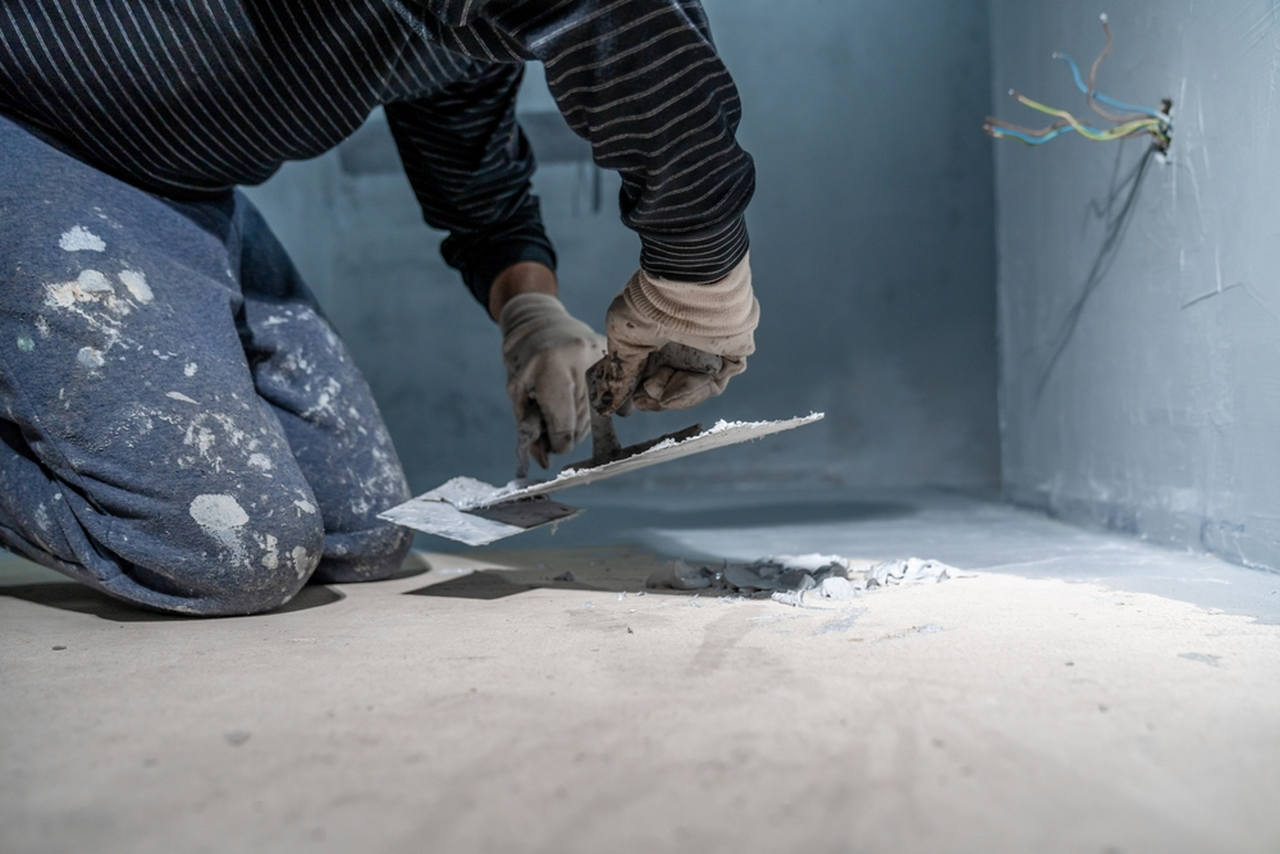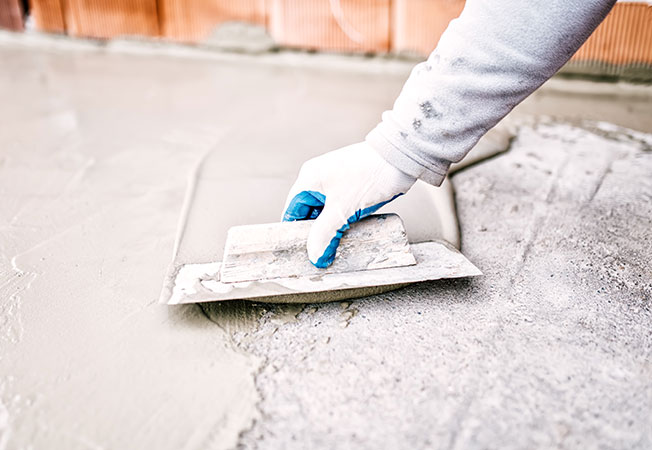The Do’s and Don’ts of Sump pump discharge drainage Omaha for Residential Properties
The Do’s and Don’ts of Sump pump discharge drainage Omaha for Residential Properties
Blog Article
How Waterproofing Works: A Detailed Take A Look At Techniques and Technologies
Waterproofing is essential for protecting frameworks from moisture-related damages. It entails different methods and technologies that create obstacles against water intrusion. Traditional approaches, such as compressed clay, coexist with modern developments like liquid-applied membranes. Understanding the subtleties of these techniques is crucial for effective application. The effectiveness of any kind of waterproofing service pivots not only on the methods made use of but likewise on ongoing upkeep and inspection. What are the key variables that influence lasting performance?
Recognizing the Basics of Waterproofing
Waterproofing is a necessary process that shields structures from water invasion, which can bring about considerable damage gradually. This technique entails the application of various materials and strategies developed to develop a barrier against wetness. The key objective is to avoid water from permeating surface areas, which can create wear and tear, mold and mildew growth, and architectural instability.Various variables affect the choice of waterproofing method, including the kind of framework, its place, and environmental problems. Understanding the physics of water motion and the homes of various products is critical in selecting a reliable waterproofing solution.Effective waterproofing not just safeguards structures yet additionally enhances their longevity and stability. Normally, it is incorporated right into the layout stage of building and construction to guarantee comprehensive protection. As awareness of water-related issues grows, the importance of comprehending waterproofing basics becomes increasingly clear to architects, contractors, and homeowner alike.
Conventional Waterproofing Methods
Traditional waterproofing methods have actually been used for centuries, depending on tried and true methods and materials to safeguard frameworks from water damages. Among the oldest methods involves using clay, which, when compacted, creates an all-natural obstacle versus moisture. Additionally, asphalt, a sticky, black material derived from petroleum, has actually been utilized for its waterproof residential or commercial properties, typically used to roof coverings and foundations.Another method involves the application of lime-based plasters, which give a breathable layer that enables dampness to run away while preventing water access. Thatch roofing, a traditional method still seen in some cultures, uses outstanding waterproofing due to its securely loaded straw layers.Moreover, making use of stone and block has actually projected, as these products are naturally resistant to water when correctly installed. On the whole, typical waterproofing approaches highlight the relevance of picking ideal materials and construction practices to boost toughness versus water invasion.
Modern Waterproofing Technologies
Innovations in modern-day waterproofing innovations have reinvented the means frameworks are secured from water damages. Innovative methods such as liquid-applied membrane layers and advanced sealers have actually improved the performance and flexibility of waterproofing options. These modern technologies enable for seamless application, minimizing the risk of leakages and making certain extensive protection over intricate surfaces.Moreover, the combination of clever modern technologies, such as moisture sensors and automated tracking systems, makes it possible for real-time analysis of waterproofing efficiency. This proactive strategy helps with prompt upkeep and minimizes long-lasting repair work costs.Additionally, advancements in spray-applied layers provide fast application and excellent attachment, adjusting to various substratums while providing robust security. Strategies like polymer-modified systems further boost adaptability and sturdiness, making them suitable for varied environments. On the whole, contemporary waterproofing modern technologies not just alleviate water breach yet also contribute to the long life and sustainability of structures, noting a substantial shift in the market.
Products Utilized in Waterproofing
The performance of waterproofing options greatly depends on the products used in their application. Various materials are employed to create barriers against water access, each with distinct properties suited for different settings. Commonly made use of products consist of membrane layers, finishes, and sealants.Liquid-applied membrane layers, usually made from polyurethane or acrylic, create a smooth barrier that adjusts to intricate surfaces. Sheet membranes, usually constructed from rubber or thermoplastic, deal sturdiness and are ideal for larger locations. Furthermore, cementitious waterproofing materials, made up of cementitious compounds, supply outstanding bond and flexibility.Sealants made from silicone or polyurethane are necessary for joints and joints, making sure comprehensive security. Innovative products, such as geo-composite membrane layers, integrate several functions, boosting performance. Generally, the option of waterproofing products is vital in accomplishing durable and reliable water resistance, customized to specific task demands and ecological problems.
Typical Applications of Waterproofing
Waterproofing plays an essential role in different sectors, ensuring the longevity and integrity of structures. Common applications consist of household options that secure homes, business facilities that safeguards companies, and commercial settings that require durable defense against wetness. Understanding these applications highlights the relevance of waterproofing in maintaining both security and functionality across different environments.
Residential Waterproofing Solutions
Many property owners encounter difficulties with moisture intrusion, making effective residential waterproofing services important. Numerous approaches exist to resolve this issue, including inside and exterior waterproofing systems. Inside solutions frequently entail the application of sealants and finishes to basement walls, which help stop water seepage. Exterior techniques usually consist of the installment of water drainage systems and waterproof membranes that draw away water away from the foundation.Additionally, house owners might consider sump pumps to eliminate water accumulation and dehumidifiers to regulate moisture degrees. Correct grading and making use of rain gutters likewise play an essential function in taking care of water circulation around the home. By applying these techniques, homeowners can considerably lower the danger of water damage and mold growth, ensuring a completely dry and secure living setting.

Business Framework Protection
Reliable waterproofing solutions play a vital function in the defense of industrial facilities. Drainage & waterproofing company Omaha. These methods are necessary for guarding buildings, auto parking structures, and bridges from water damages, which can endanger architectural integrity and cause pricey repair services. Typical applications include the installation of membranes, layers, and sealers that produce barriers versus dampness infiltration. Locations such as basements, roofing systems, and exterior wall surfaces are often prioritized to ensure long life and toughness. Furthermore, waterproofing systems can improve power effectiveness by protecting against water-related concerns that may lead to mold development and damage. By implementing durable waterproofing actions, building proprietors can protect their investments and preserve functional efficiency, ultimately adding to the general sustainability of business facilities
Industrial Applications Introduction
While numerous markets encounter distinct difficulties, the need for reliable waterproofing solutions continues to be a continuous in industrial applications. Industries such as production, construction, and energy typically experience environments where moisture direct exposure can jeopardize architectural stability and functional performance. In manufacturing facilities, waterproofing is essential for protecting machinery and products from water damage. In building, it safeguards structures and basements versus groundwater infiltration. The power industry depends on waterproofing for the protection of devices in hydroelectric plants and offshore his explanation structures. Additionally, food processing markets make use of waterproofing to guarantee health and compliance with security requirements. On the whole, effective waterproofing services are crucial for enhancing longevity, security, and performance throughout different industrial setups.
Maintenance and Long Life of Waterproofing Solutions
Although waterproofing solutions are designed to offer long-term security against moisture find out invasion, normal maintenance is vital to guarantee their effectiveness and durability - Drainage & waterproofing company Omaha. Regular examinations play a substantial duty in identifying potential issues such as splits, peeling off, or indications of water damage. Resolving these issues quickly can prevent further wear and tear and costly repairs.Additionally, cleaning up the surface area of waterproofed areas helps eliminate dirt and debris that can jeopardize the honesty of the waterproofing obstacle. It's likewise suggested to reapply protective coverings or sealers as advised by manufacturers to preserve suitable efficiency. Environmental elements, such as UV exposure and extreme climate condition, can impact the life expectancy of waterproofing materials, making normal evaluation important
Often Asked Questions
Can Waterproofing Be Applied in Winter?
The question of using waterproofing in winter raises problems concerning bond and treating. Lots of products may not carry out at their best in reduced temperature levels, necessitating careful selection and consideration of specific standards for effective application.
How Much Time Does Waterproofing Normally Last?
The period of waterproofing efficiency varies based on products and environmental factors. Normally, it can last from 5 to 10 years, yet regular upkeep and examinations are vital to assure peak performance and longevity.
Is DIY Waterproofing Effective and Safe?
The efficiency and safety and security of DIY waterproofing depend upon various elements, including material quality and application technique. While some individuals accomplish satisfactory outcomes, others might encounter concerns that jeopardize lasting security and structural integrity.
What Are the Signs of Failing Waterproofing?
Indicators of failing waterproofing consist of visible water spots, peeling off paint, mold and mildew growth, stuffy odors, and wetness in wall surfaces or ceilings - Foundation waterproofing Omaha. These indications suggest compromised barriers, requiring prompt inspection and possible remediation to avoid more damage
Just how Do I Select the Right Waterproofing Specialist?

Report this page